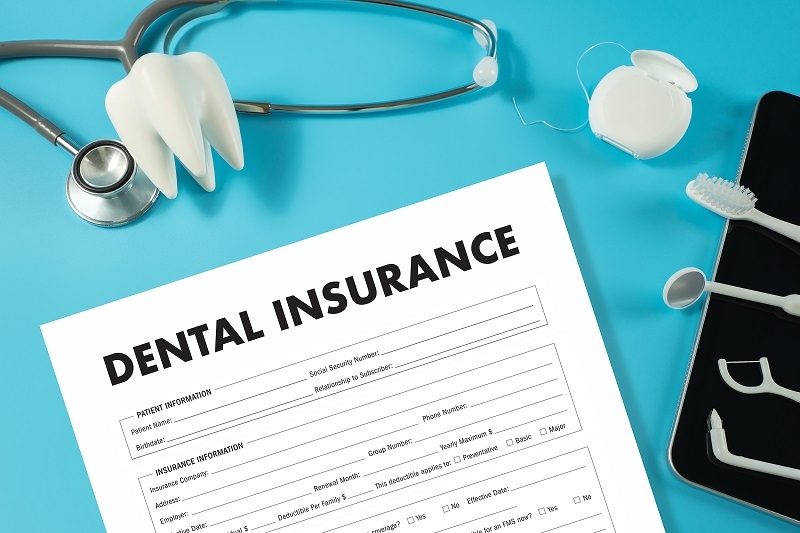Dental Insurance Guide to Maximize Coverage & Minimize Costs

Brushing and flossing are part of the routine to keep a healthy smile, but being ready for dental expenses is also an essential factor in this equation. Dental procedures can become quite costly, especially when you haven’t set aside money for them. That is the point of a dental insurance guide: to be there for you. Gaining an understanding of how dental insurance functions can greatly help you when making smart financial decisions, obtaining the best care, and avoiding unnecessary expenses.
If you are just starting, knowing the basics can really make a difference, whether you are comparing plans, evaluating benefits, or seeking oral health savings tips.
Understanding Dental Insurance
A dental insurance guide is a helpful tool that tells you how your policy is structured, what services are covered, and how to use your benefits efficiently. Unlike health insurance in general, dental insurance normally comes with specific limits, waiting periods, and categories of coverage.
Usually, dental insurance separates treatments into different levels:
- Preventive care: It covers the usual cleanings, examinations, and X-rays. Most plans fully pay for these procedures since prevention is the main reason for avoiding the development of bigger issues in the future.
- Basic care: Commonly, treatments like fillings, extractions, and minor repairs are grouped in this category. Most of the time, these are partially covered, and the coverage is up to a certain percentage.
- Major care: Root canals, bridges, crowns, and dentures are major procedures that require higher out-of-pocket costs most of the time.
It is crucial to know the coverage of dental insurance before purchasing a plan. Orthodontics or cosmetic procedures such as teeth whitening are not included in every plan, so being aware of your requirements beforehand will make it easier for you to find the right match.
Types of Dental Coverage Options
There are different dental coverage options, and each of them is suitable for various requirements and budgets. Below are the main ones:
Dental Health Maintenance Organization (DHMO)
- You have to select a dentist from the list provided by the network.
- Very low premiums and little paperwork are involved.
- You are restricted in terms of the degree of flexibility if you want to visit a doctor who is not in the network.
Preferred Provider Organization (PPO)
- Consists of a wider network of dentists and thus offers more flexibility.
- Although the premiums are usually higher, patients can still get partial coverage even if they receive treatment from out-of-network providers.
- The plan is suitable for individuals who desire to have the freedom to select their dentist without restrictions.
Indemnity Plans
- There is no restriction on the choice of a dentist.
- The plan pays you back part of the doctor’s bill according to the insurer’s rate schedule.
- The premiums and other out-of-pocket costs may be on the high side.
Discount Dental Plans
- Although these are not insurance, they offer members reduced rates.
- The plans are perfect for people who mostly pay out-of-pocket and are only occasionally in need of dental work.
You can choose the plan that is best suited for your financial situation and dental needs by comparing these options for dental coverage.
What Does Dental Insurance Cover and What Doesn’t?
A fundamental aspect of any dental insurance guide is grasping what dental insurance covers. Most plans focus on preventive measures, which in the long term lead to cost reductions.
Usually, the services that are covered are:
- Routine checkups and cleanings are done twice a year.
- Basic interventions such as fillings and simple extractions.
- Major treatments like the installation of crowns and dentures (partially covered).
- The services that are presented as exceptions, or for which the coverage is only partial, are as follows:
- The implementation of aesthetic procedures (teeth whitening, veneers).
- Braces and other orthodontic care for adults (some plans may include children only).
- The condition of not covering the pre-existing circumstances of missing teeth in the new policies.
Reading through your plan’s fine print is a must before you book high-priced treatments. This will help you know the amount that the insurer will pay and what portion is going to come from your pocket.
Making a Dental Plan Comparison
Out of a very large number of options available, choosing the most suitable dental plan can be quite a challenging task. This is the reason that makes a dental plan comparison so effective. By comparing plans, it becomes feasible for you to scrutinize how different choices align with your needs and budget.
When you are doing the comparison, you should concentrate on:
- Premiums: Those are the monthly payments that you need to keep on making if you want your policy to remain active.
- Deductibles: The sum of money you have to pay out of your own pocket before the insurance will cover the rest of the costs.
- Annual maximum: The highest amount that the insurance will pay in one year.
- Coverage percentages: The portion of the costs that the plan covers for preventive, basic, and major care.
- Network size: Whether your preferred dentist is included in the plan’s network or not.
A dental plan comparison that you have taken the time to do keeps you from overpaying or receiving less coverage than you require.

Tips to Maximize Dental Coverage
Knowing the ins and outs of your plan is just the first step. The second, and most important, is smart usage, which will allow you to get more value from your plan in return. Here are some oral health savings tips to make the most of your dental coverage:
- Use preventive care benefits: In general, checkups and cleanings are covered with no charge, so preventive care should never be on a missed appointment list. It also helps prevent unnecessary treatments in the future as the doctor detects problems early.
- Know your annual limits: When your coverage caps at an amount per year, rescheduling your major treatments with caution will help you maximize your plan. A case in point, you require two crowns, so getting one done this year and the other after your benefits renew would be a smart move.
- Stay in-network: Choosing a dentist who is in your insurance network will usually come with a lower cost. Those who are not in the network can set higher rates, which you may only be partially covered for.
- Submit claims on time: Make sure your dentist submits claims on time, and if you are instructed to do so, then submit them yourself to be sure you will get your reimbursements on time.
- Consider family plans: Family plans often come cheaper per person if there is a need for multiple members of the family to be covered.
You can extend your benefits and prevent shock costs by implementing these oral health savings tips.
Choosing the Best Dental Plan
Picking the appropriate plan means juggling the two: cost and coverage. As a point of departure in deciding the best dental plan, take a good look at what your mouth’s health needs are.
Have a look at the ones below:
- Do you have a habit of visiting the dentist to get your teeth thoroughly cleaned, or do you often require really major work?
- Do you want to keep your current dentist, or are you open to trying a new one?
- Is the use of braces or other dental cosmetic procedures something that you would like?
At times, the difference in the amount of the premium is insignificant, but the level of coverage is remarkably better.
How to Minimize Out-of-Pocket Costs?
Even if an individual has an excellent insurance plan, the total of dental bills can still be quite high. To help you keep your costs low, here are some easy ways you can do:
- Schedule preventive visits: Preventive care is the early detection of dental problems, which is the reason why no money will go to waste in this period of time.
- Ask for pre-treatment estimates: Before you start the treatment, ask your dentist to give you a written estimate of the price, and check with your insurer what percentage they will be covering.
- Use flexible spending accounts (FSA) or health savings accounts (HSA): These accounts authorize the use of pre-tax dollars for dental care, which results in an overall reduction in your taxable income.
- Shop around for procedures: Pricing for the same dental work may vary with different dentists. Do not be afraid to check prices.
- Negotiate payment plans: If you find a dental office that offers these plans, you will have the option to pay in installments. This is nice, especially when you are short on money.
If you are comparing a good plan with wise spending, you will be in control of your dental expenses for the most part.
Conclusion
An enjoyable dental experience stems from understanding your options, accurately comparing plans, and utilizing your benefits appropriately. The complete dental insurance guide is the resource that will walk you through the details, including what dental insurance offers and easy comparisons of dental plans.
Once you put together all of these discoveries and combine them with tips to save on oral health practically, you will be well on your way to identifying the best dental plan for your budget and needs.
This content was created by AI

